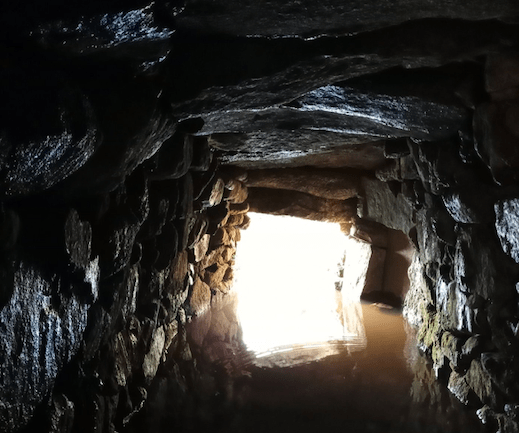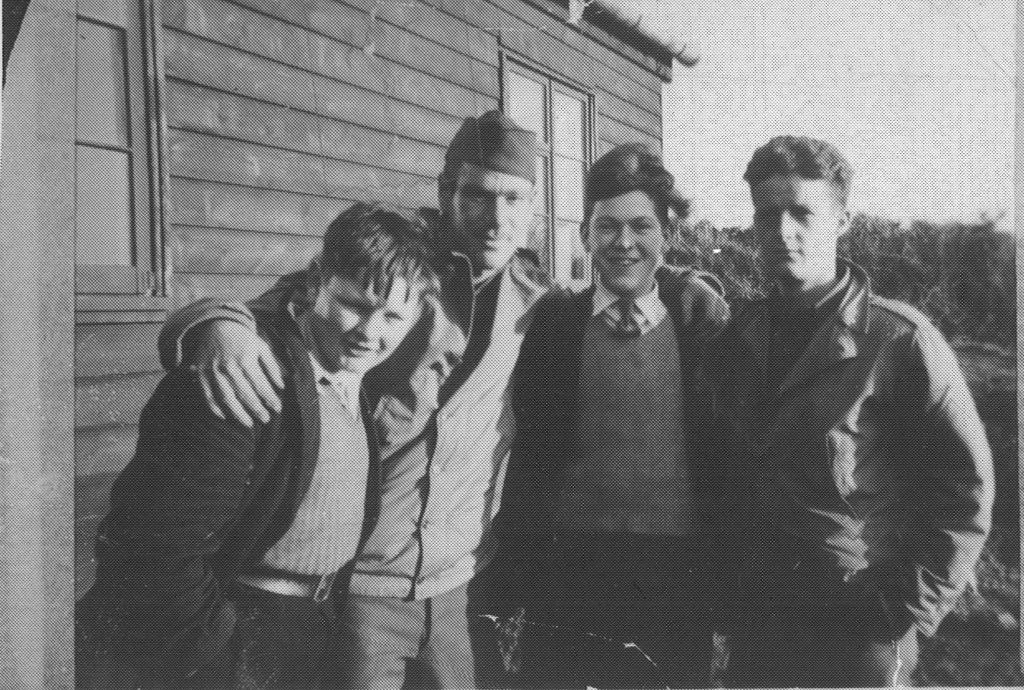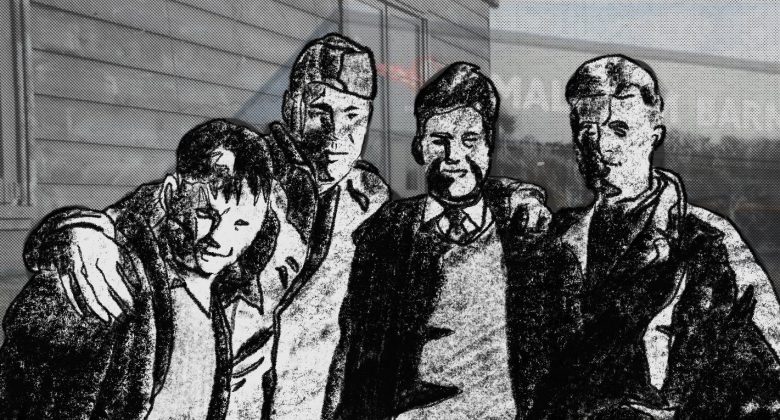In this post, our valued member of the 2021 voluntary Citizen Curator programme, Runi Liverod, discusses his latest artwork (see above), inspired by his research into Walker Lines; Bodmin’s very own US Army Camp during the Second World War…
As a Citizen Curator, one of the things I’ve realised while researching the Walker Lines camp (now the Walker Lines Industrial Estate) in Bodmin, is that I have been thinking a lot about liminal spaces and the ghosts of buildings long gone.

I’ve previously spent time visiting various ancient Cornish sites with my father. It’s very easy to stand inside a fougou and think about the people who may have sheltered or worshipped in there, but it’s a little harder to feel the same way when you walk around an industrial estate. Shouldn’t it be easier to do that with long gone or mostly diminished structures from the Second World War? Compared to the Iron Age people in their fougou at Carn Euny, it might as well have been yesterday.
I recently started volunteering at Pendennis Castle. Though the fort itself is Tudor, the castle was used during the Second World War. You can still see the battery and guns, but what you can’t see are the temporary huts which were initially erected on the Parade Ground. You can walk on the grass without knowing if you would be passing through a wall or stepping on a soldier’s bunk as if you were a kind of ghost from the future, haunting the past.
I have those same thoughts about Walker Lines. Not many of the original buildings remain, but there are still places like the gymnasium. Now owned by the Walker Lines Gymnasium Trust, the gymnasium was built for the American GIs who would occupy the camp. The building still has many
original features, including the urinals! However, the building I’ve been thinking most about recently is Hut 32.

On what used to be the site of the hut is now a bakery. Hut 32 is one of the few Walker Lines locations of which Bodmin Keep have photographs from the Second World War. A lot of the photography of the camp is post Second World War, when it first belonged to the Royal Army Educational Corps, and then the JSSL (Joint Services School for Linguists).
The photo I was shown is of American GIs with local schoolboys outside Hut 32, dating from the Second World War. Immediately I wanted to do something with the photo, so I decided to use it to make some art reflecting on the idea of the ghosts of buildings.
Using the art app ‘Procreate’ on my iPad, I merged the photo of the hut with a photo of the modern-day bakery. I made both transparent and layered them on one another, so you can see the outlines of both buildings without one being clearer than the other. I then drew the figures from the photographs over the top, making them opaque and easier to see. The effect is of the buildings haunting the people, rather than the reverse. It looks as if the future is hovering behind the Americans and the schoolboys, waiting to be born.
Since creating the picture, I’ve been thinking about the history of other places as unassuming as the modern Walker Lines Industrial Estate. What older structures am I haunting when I walk around Truro Health Park, or Penryn’s Jubilee Wharf? What will people in the future build over the places I’ve lived and visited?
Written by Runi Liverod, Citizen Curator at Bodmin Keep
‘Supported by our Second World War and Holocaust Partnership with Imperial War Museums, funded by the National Lottery Heritage Fund’



